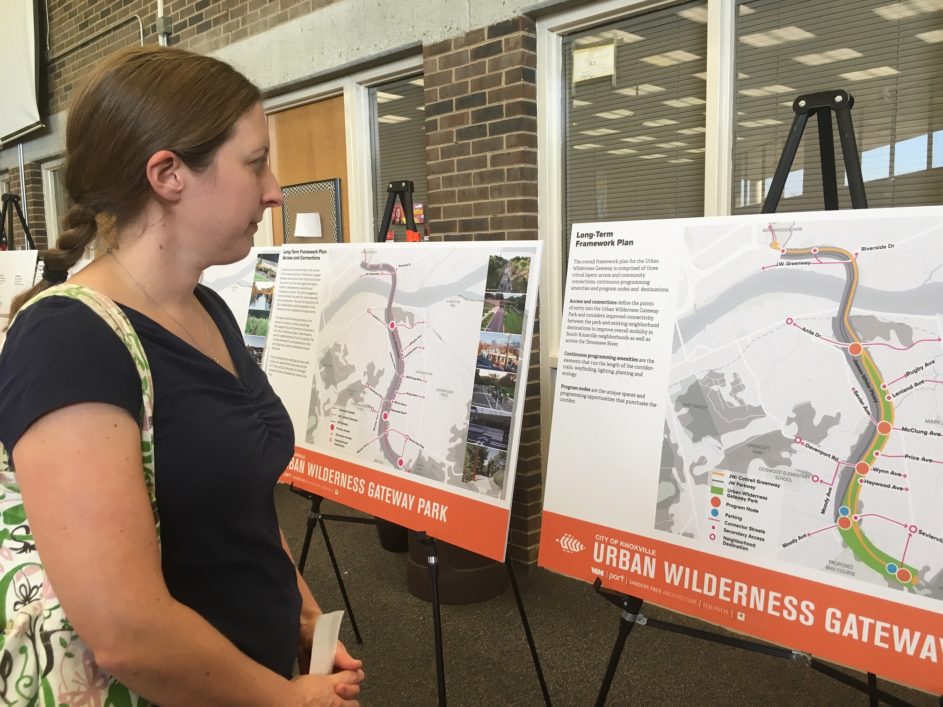The good news is, the terminus of the James White Parkway will offer outdoor play areas for all ages and not just a quiet place for police officers to sit in their cruisers and write reports.
The bad news (for speeders, at least) is, the days of the JWP Autobahn are coming to an end.
The city of Knoxville’s Urban Wilderness coordinator, Rebekah Jane Montgomery, led a large contingent of city staff and design-team members to South-Doyle Middle School this week for a public meeting on the latest updates to what they’re calling the Urban Wilderness Gateway Park.
Tuesday night’s meeting drew more than 150 people – SoKno residents as well as Urban Wilderness supporters from across the city. Montgomery has been visiting SoKno neighborhood stakeholder meetings for several months, ever since the gateway kickoff “block party” held at the terminus on June 2, to get input on what residents want from the new park.
The feedback resulted in some alterations in the June version of the designs, most of which met with approving comments during the session.
The terminus park is the main component of an entrance into South Knoxville and the Urban Wilderness that is proposed to connect eventually across the Tennessee River from Morningside Park to Baker Creek Preserve, creating a 2.2-mile, 113-acre park.
For now, and starting with the $10 million earmarked by Mayor Madeline Rogero in her 2018-19 budget, the focus will be on the parkway terminus area. Construction on the first phase of the park is scheduled to begin in spring 2019, with a ribbon cutting set for late in the year.

Mountain-biking enthusiast Mary Beth Tugwell talks with Urban Wilderness coordinator Rebekah Jane Montgomery after the meeting.
Slides presented by Brandon Pace of Sanders Pace Architecture showed where the underpass of the bridge that connects Moody Avenue with Sevierville Pike will be turned into a “unique experience.” There will be parking on the north side of the bridge, with landscaping to help create the sense of moving from urban to wilderness space.
A beginner bicycle area is envisioned in the underpass area as well as restrooms, an event plaza and a ride center. Play amenities such as swings, slides and bouldering and climbing rocks will be incorporated along with a picnic area and a woodland plaza.
A Park Drive will create slow-moving, vehicular access to and from the Baker Creek area, helping to allay the burden of increased traffic on nearby neighborhood streets. There will also be amenities for bicycle and pedestrian traffic such as a greenway and compacted dirt trails.
There will be changes to the Baker Creek Preserve entrance area to give it more functionality and formal parking. Maintaining and augmenting vegetation will be a large priority, as well as providing accessible paths and loops for all ages, mobility and skill levels.
The design team is looking at ways to connect the amenities along the James White Parkway with small parks and public spaces in the adjacent neighborhoods.
The hoped-for eventual outcome is that one span of the parkway will be designated for two-way motorized-vehicle traffic and the other for bicycles and pedestrians, making a fun and pleasant connection between the two sides of the river.
The city is working with the Tennessee Department of Transportation to acquire part of the land around the parkway. TDOT still owns about 80 acres that was purchased with federal highway funds to finish the now-defunct James White Parkway extension.

